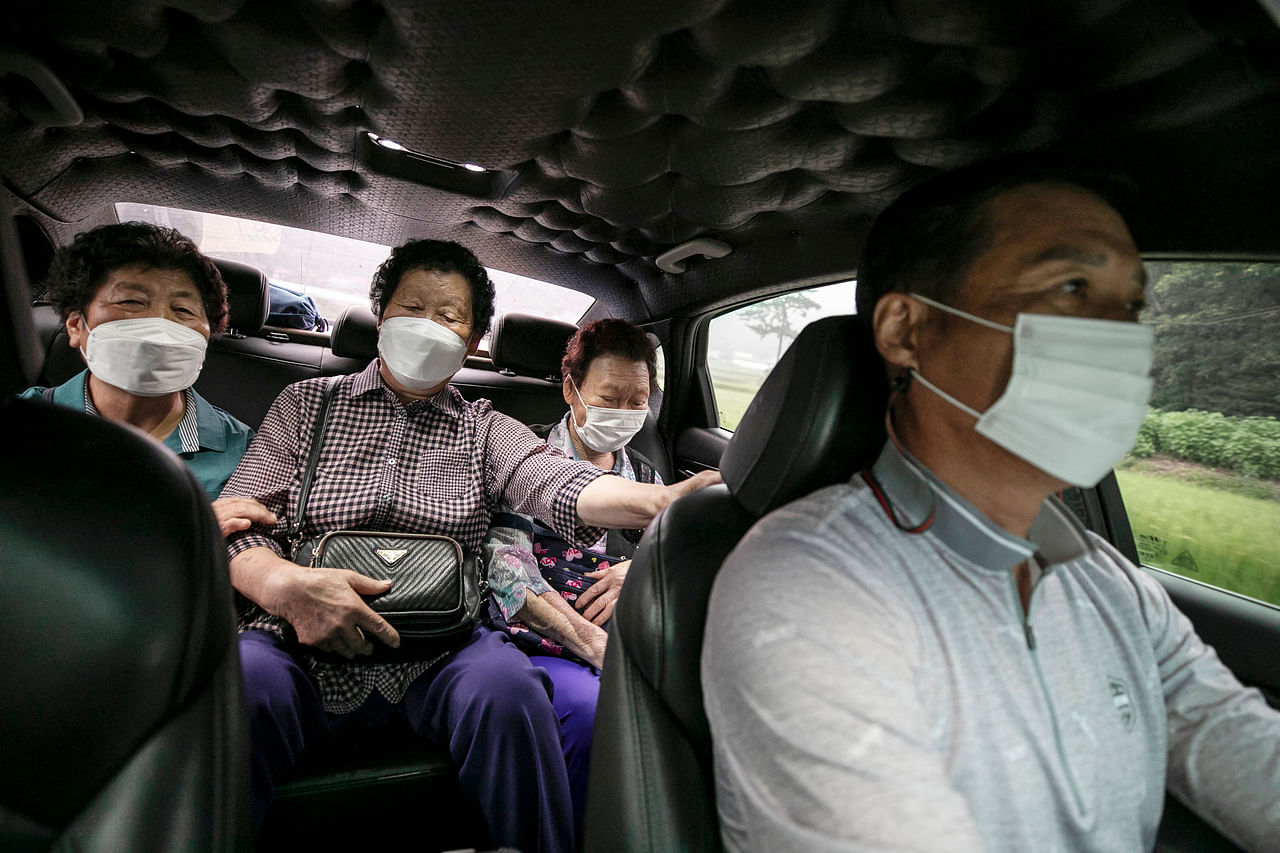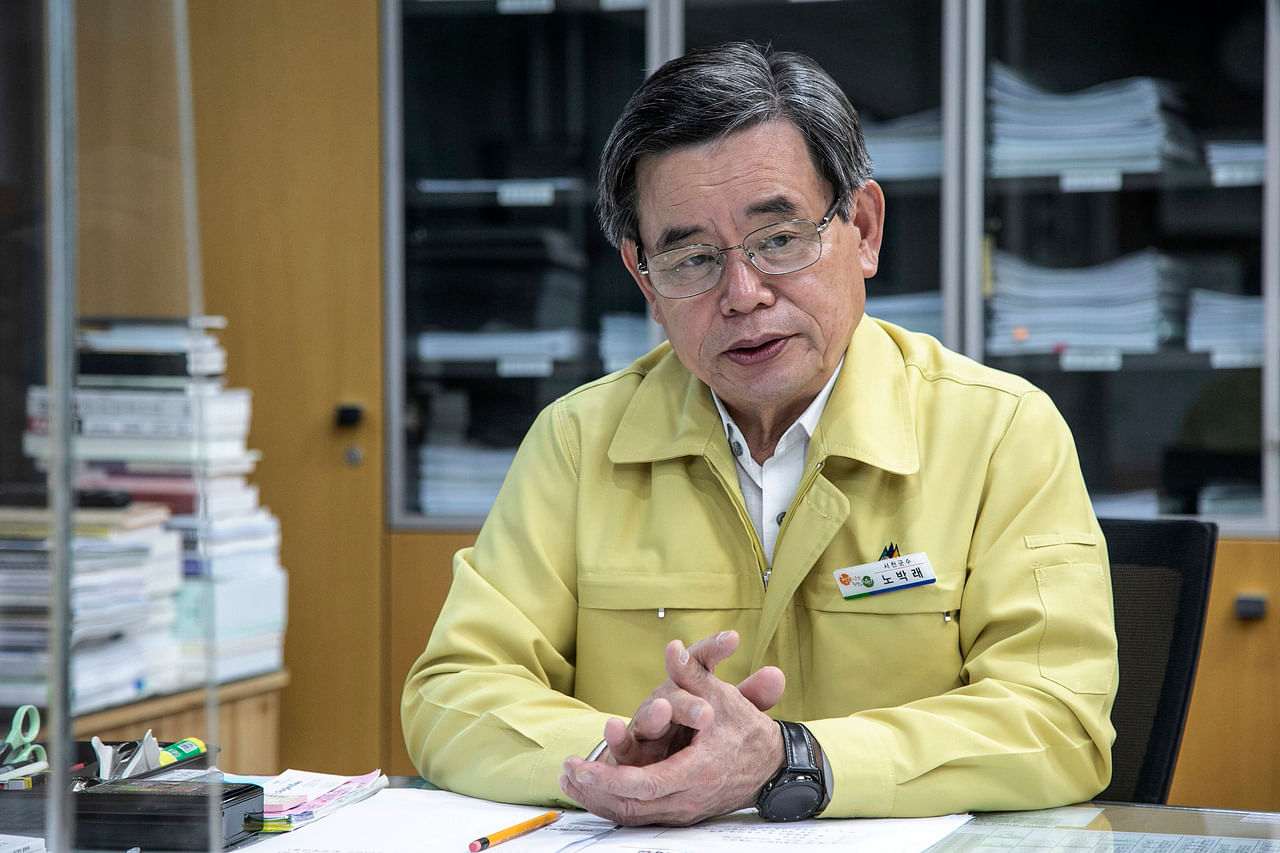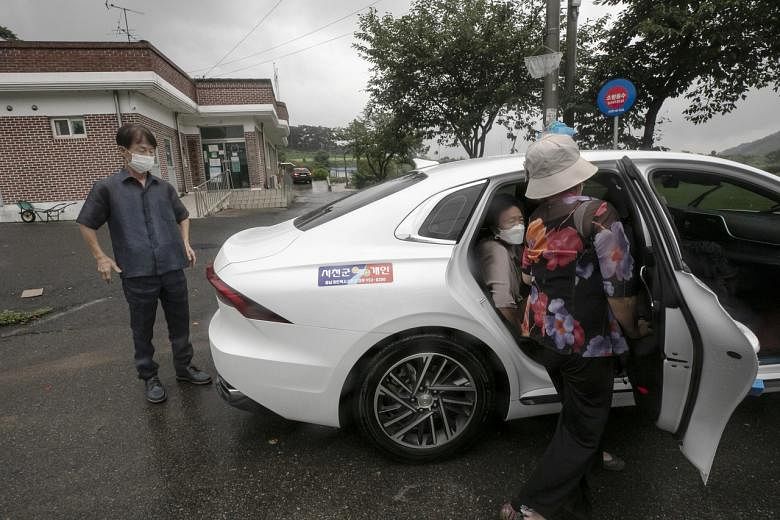SEOCHEON, SOUTH KOREA (NYTIMES) - On a recent overcast morning, a village on South Korea's west coast showed no sign of human stirring until five older residents slowly emerged from the fog that shrouded lush, green rice paddies.
The group was waiting for what would once have been an unaffordable luxury in this rural corner of the country: a taxi to take them shopping and to doctors' appointments in the county seat 20 minutes away.
But even the poorest among them could easily afford this ride. Each passenger's share of the total fare would be measured not in dollars, but in cents.
"It's a godsend," said one of the passengers, Madam Na Jeong-soon, 85.
Their village is in Seocheon County, the birthplace of the Taxi of Hope, better known as "the 100-won taxi" (100 won is about 11 Singapore cents).
In 2013, the county faced a crisis. As its population declined, so did the number of bus passengers, which led to unprofitable routes being cancelled. Then bus drivers went on strike. Where once there had been three buses a day, suddenly none came at all, stranding those who did not own cars in remote hamlets.
The county's solution? Let people call taxis to isolated villages where so few lived that no bus company wanted to serve them. The taxis would charge passengers only 100 won for short trips, with the county government picking up the rest of the fare.
While the service is most popular with older, low-income residents, anyone whose hamlet is more than 700m from the nearest bus stop can call a 100-won taxi when travelling to markets in nearby towns.
The idea proved so successful that soon, with backing from the national government in Seoul, Seocheon's solution spread to other counties, helping to revolutionise public transport in rural South Korea.
"The taxi now drives me all the way to my doorstep," Madam Na said. "You can't imagine what it was like in older days, when I had to haul my shopping bag all the way from the bus stop to my place. It killed my legs, but there is no one around here to help old folks like me."
For years, South Korea has reported one of the lowest birth rates in the world, creating a fast-ageing population and causing strains in all aspects of society, from welfare budget to public transport to schools.
The impact of the demographic shift is most visible in thousands of rural villages, whose young people, including Madam Na's children, have left for big cities for better-paying jobs. In Madam Na's village of Seondong, the number of households, once as many as 25, has declined to a dozen.
Government officials say supporting the 100-won taxi service is far more cost-effective than deploying subsidised buses to the tiny hamlets, tucked between mountains, where few people other than arthritic, retired farmers live - and building wider roads to accommodate those buses.
Local taxi drivers have welcomed the programme, too, because it brings extra income.
"I probably know more about these old folks than anyone else because I drive them two or three times a week," said Mr Lee Ki-yeop, 65, a 100-won taxi driver. "When one of them misses my taxi for a week or two, I know that there is something wrong with them."

For Madam Na and her friends, the taxi ride to Seocheon's county seat, also known as Seocheon - and to another town where there is a farmers' market every five days - is virtually the only time they venture out.
Besides picking up groceries and seeing their doctors, they exchange news with acquaintances from other villages, like who was taken to a nursing home and who died.
Seocheon boasts two Unesco World Heritage attractions: a centuries-old practice of weaving fine fabric from ramie plants, and its tidal flats teeming with marine life. Part of South Chungcheong province, the county is also home to sogokju, said to be the oldest type of rice wine in South Korea.
During the bird-migrating seasons, tourists from across South Korea drive to Seocheon to watch flocks of longbills, mallards and honking swans feeding on its tidal flats before flying to Siberia.
But the county did not escape the upheaval that South Korea's rapid industrialisation wrought on its rural towns. Its ramie fabric industry declined, with most of South Korea's clothes now imported or made of synthetic materials. People drink more imported wine and beer than sogokju.

The county's population shrank from 160,000 in the 1960s to 51,000 this year, nearly 38 per cent of them aged 65 or older. In Madam Na's village, the youngest residents were a couple in their 60s.
Seocheon, the county seat, has all the looks of a fast-ageing community. During a recent market day, its orthopaedic and other medical clinics were jammed with elderly patients.
At the nearby bus and taxi stop, stooped, older passengers with shopping bundles sat under an awning like a row of birds, waiting for their buses or 100-won taxis to show up.
A younger assistant in a yellow vest, deployed by the county administration, was busy helping them to carry their bags on and off the taxis.
When Statistics Korea conducted a nationwide survey in 2010, a lack of public transport was one of the biggest grievances for older villagers in rural South Korea, who had neither cars nor children who could drive for them.
"It was especially difficult for old people to walk to the nearest bus stop when it snowed in winter or was scorching hot in summer," said Mr Noh Pak-rae, the top government official in Seocheon.
The 100-won taxis carried nearly 40,000 passengers from 40 villages in Seocheon last year. The programme cost the county US$147,000 (S$197,200).

